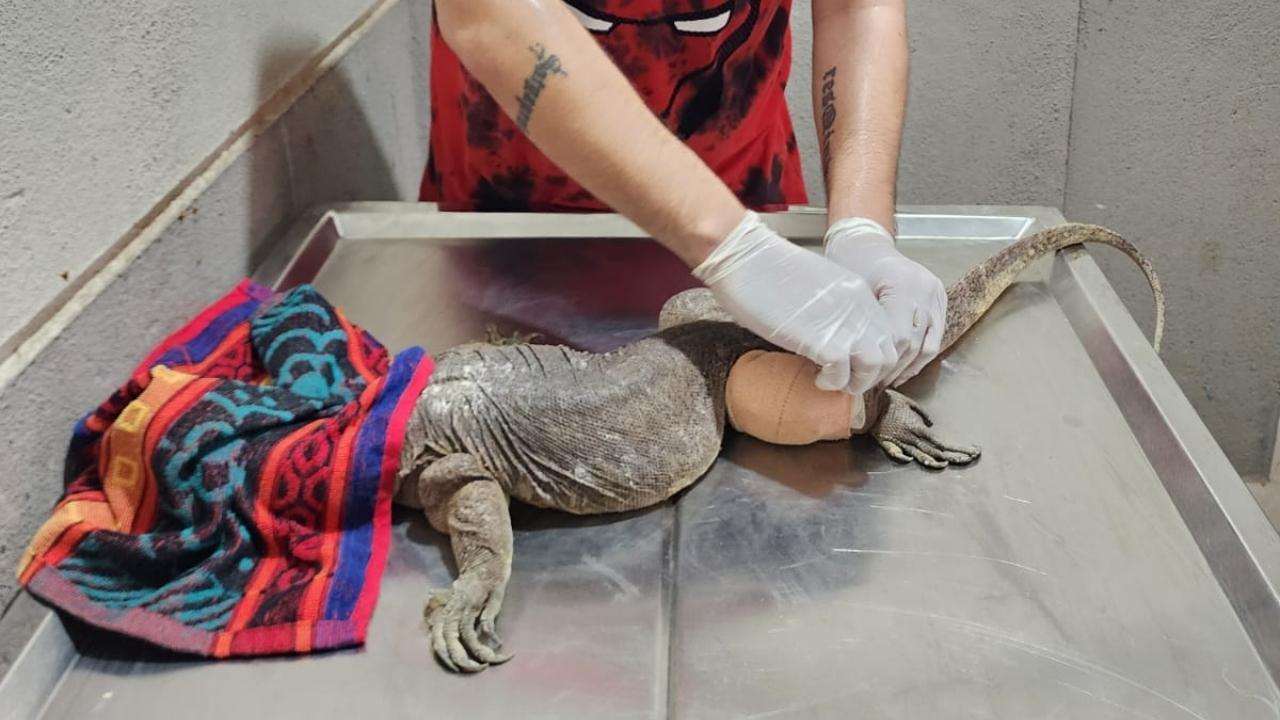What can be termed as an inhuman act and also hints towards poaching of wild animals, the Indian Monitor Lizard with all its limbs broken was rescued by the forest department from Maharashtra's Palghar district

Pic/Pawan Sharma
What can be termed as an inhuman act and also hints towards poaching of wild animals, the Indian Monitor Lizard with all its limbs broken was rescued by the forest department from Maharashtra's Palghar district.
Last week a major surgery was performed to fix one of its broken limbs, which was successfully executed by Dr Rina Dev and her team of vets.
A Few days back a 3.5 feet monitor lizard was rescued by the forest department and sent to Mumbai for treatment. The reptile was rescued in coordination with Honorary Wildlife Warden Palghar district Vaishali Chawhan, who provided it with initial medical treatment and care.
Honorary Wildlife Warden of Thane, Pawan Sharma said, "The medical evaluation revealed that all the hands and feet of the lizard were broken which was suspected to be a case of illegal hunting and poaching attempt. The reptile was stabilized for some days and sent to RAWW in Mumbai for its further treatment."
Since the reptile was severely injured, dehydrated, and malnourished it was not possible to immediately perform surgeries and thus it was allowed to regain a condition where it could undergo surgeries.
"Last week a major surgery was performed to fix one of its broken limbs, which was successfully executed by Dr. Rina Dev and her team of vets. The reptile is now under care at RAWW and responding slowly to the treatment and soon the teams plan to perform the other surgeries as well." Added Sharma.
It may be noted that initially, the chances of its survival and release were a big question, however with recent developments, there are chances that the reptile could be released back to the wild after complete recovery.
It may be noted that wildlife poaching and trade in lesser-known species is a huge problem that needs to be addressed with utmost urgency. Experts feel that while all attention is generally given to mega-species such as tigers, monitor lizards, pangolins, jackals, lorises, bears, tortoises, and owls, many other species are being hunted at an alarming rate.
The Indian monitor lizard is protected under Schedule 1 of the Wildlife Protection Act, 1972, and any trade involving the animal or its body parts is an offence under the Act. The lizards are usually hunted for food and also killed for leather. There is also a belief that the oil extracted from the lizard's body can be used as an ointment for skin injuries.
 Subscribe today by clicking the link and stay updated with the latest news!" Click here!
Subscribe today by clicking the link and stay updated with the latest news!" Click here!










